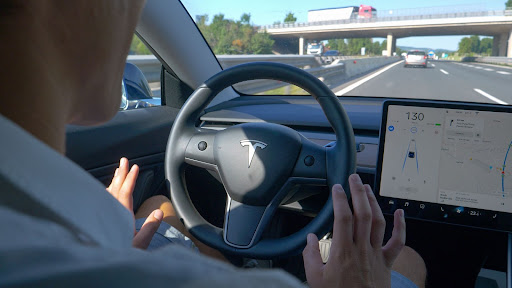Autonomous vehicle liability: Who’s at fault in a self-driving car accident?
Motor Vehicles Accidents - June 7, 2023
Autonomous vehicles, also known as self-driving cars, are becoming more common on our roads. This new technology presents unique challenges as it disrupts traditional norms, especially regarding legal questions concerning liability and fault in case of accidents.
While most legal systems are accustomed to attributing fault to a human driver in the event of an accident, the introduction of autonomous vehicles requires a shift in this perspective. Who is to blame when a car drives itself: the car manufacturer, the software designer, the owner, or someone else? This FAQ aims to answer some of these complex questions and clarify the issues of autonomous vehicle liability.
What is autonomous vehicle liability?
Autonomous vehicle liability is the legal and financial responsibility for accidents, damages, or injuries caused by an autonomous vehicle. This concept can be difficult to understand given the advanced technology and the fact that the driver may not be driving the vehicle when the accident occurs.
The complexity in determining liability comes from the shift of responsibility from the driver to the vehicle and potentially the manufacturer or software provider. The law still needs to evolve to clearly define this liability, making this a very fluid and complex issue.
Who is liable if a self-driving car gets involved in an accident?
Determining accident liability for autonomous vehicles can be complicated. The liability is often determined by several factors, including the vehicle’s level of autonomy, the circumstances surrounding the accident, and the laws that apply where the accident occurred.
The liable party could range from the autonomous car’s owner, manufacturer, or even the company that designed the autonomous driving system. There are also cases where liability might be shared amongst several parties involved.
Who’s at fault if an autonomous car gets hit?
Determining fault when an autonomous car gets hit depends on many factors. If the other vehicle was found to violate traffic laws, then the driver of that vehicle may be at fault. This process does not differ much from how fault is determined in accidents involving non-autonomous vehicles.
However, the scenario can be significantly different if the autonomous vehicle’s malfunction or software error contributed to the accident. In such cases, the vehicle manufacturer or the software provider might bear some or all of the liability. It’s also possible for both parties to share liability depending on the specifics of the incident.
How do fault detection and response work in self-driving cars?
Fault detection and response systems in autonomous vehicles are designed to monitor the vehicle’s various functions to identify and respond to abnormalities. This is often done by transitioning the control to a safe state. These systems are critical in ensuring the safety of the passengers and those on the road.
If a fault detection and response system fails to function as expected and this failure contributes to an accident, the liability could fall on the manufacturer or the software provider. This is because they ensure the systems work correctly and safely.
How does the law handle liability for autonomous vehicles?
Currently, laws related to autonomous vehicles vary significantly across different jurisdictions. Some countries and states have started updating their legal frameworks to accommodate autonomous vehicle technology, while others are still in the process.
In many jurisdictions, traditional principles of product liability and negligence apply to these situations, implying that manufacturers could be held liable for any defects in the hardware or software of the car.
However, this is a rapidly evolving field, so anyone involved in an autonomous vehicle accident must seek legal advice from a Chicago car accident lawyer to understand their rights and responsibilities. Contact Horwitz, Horwitz & Associates online or by phone at (800) 985-1819 for a free consultation.



